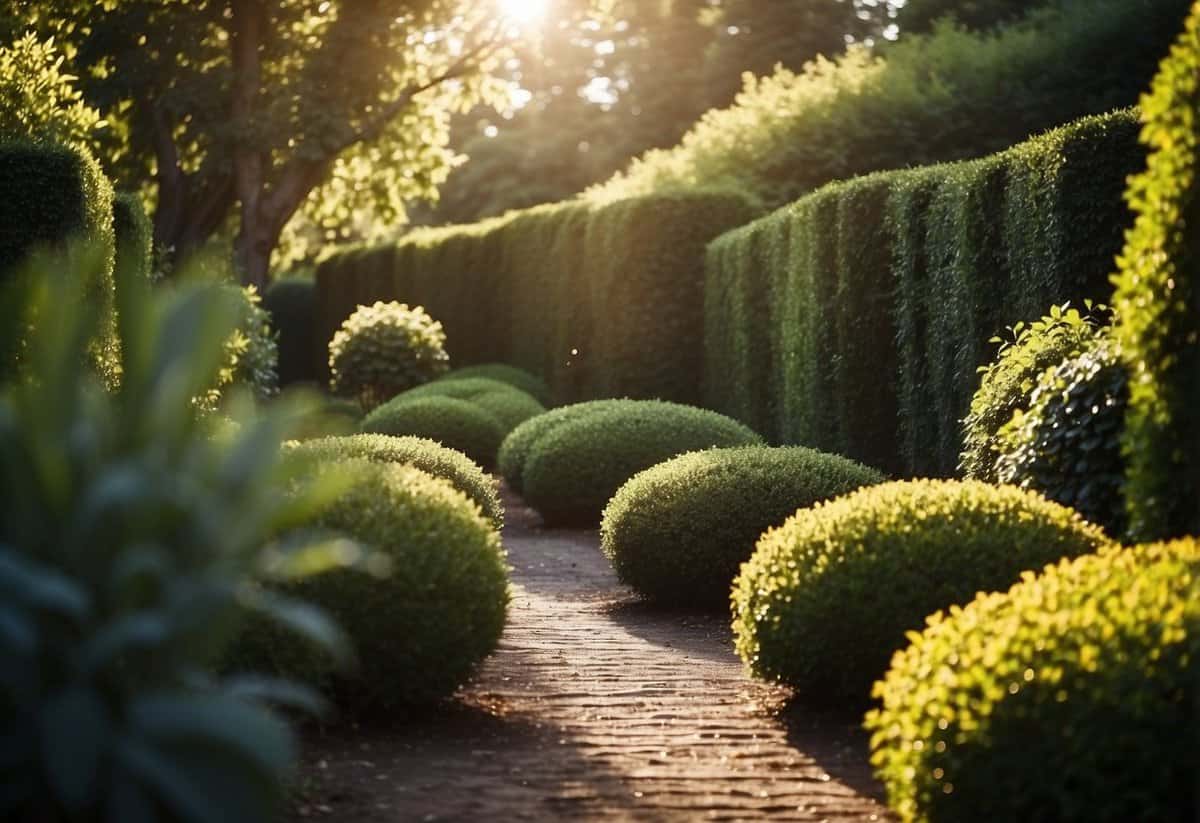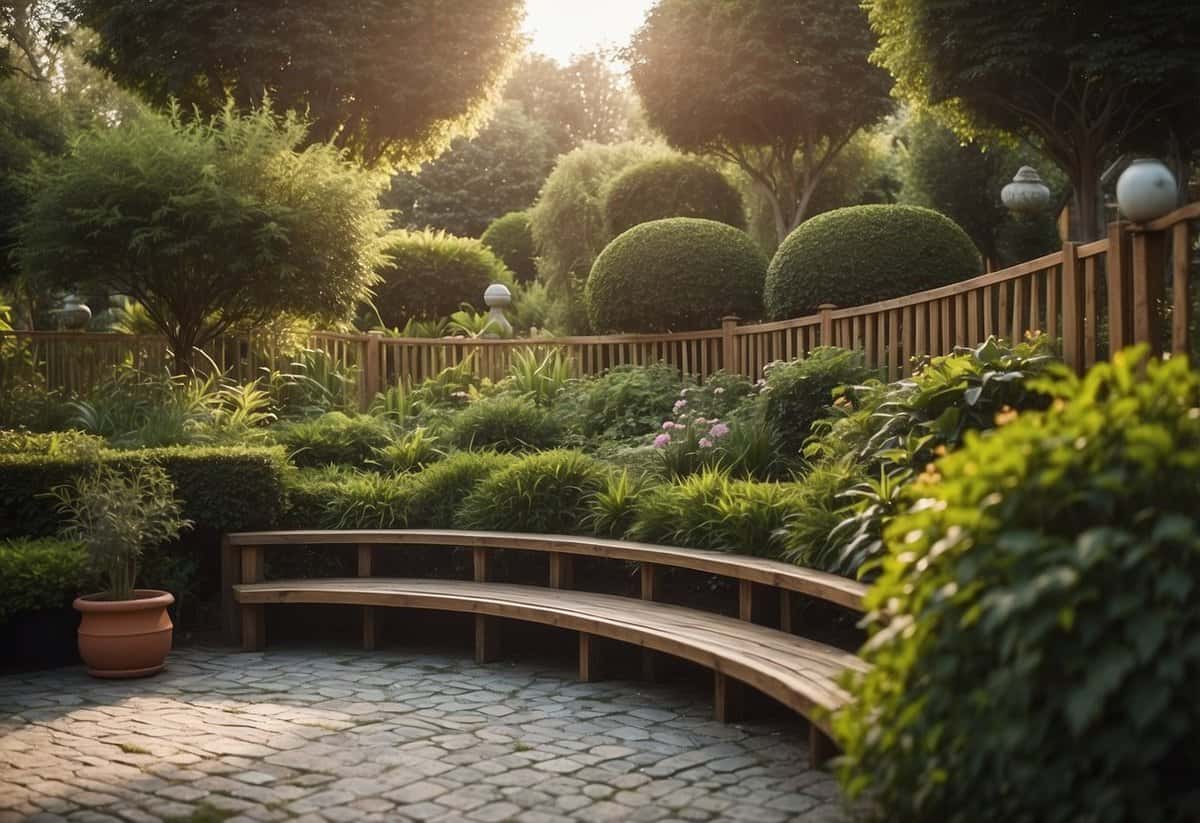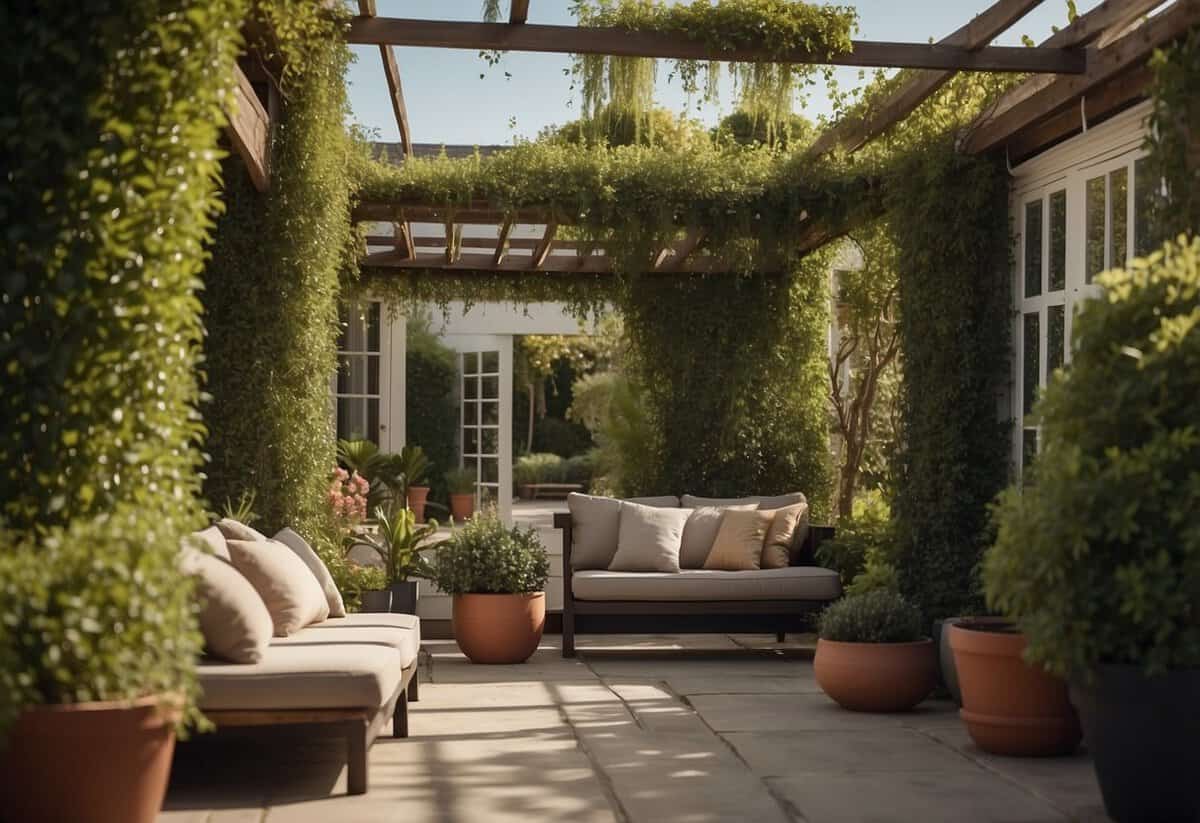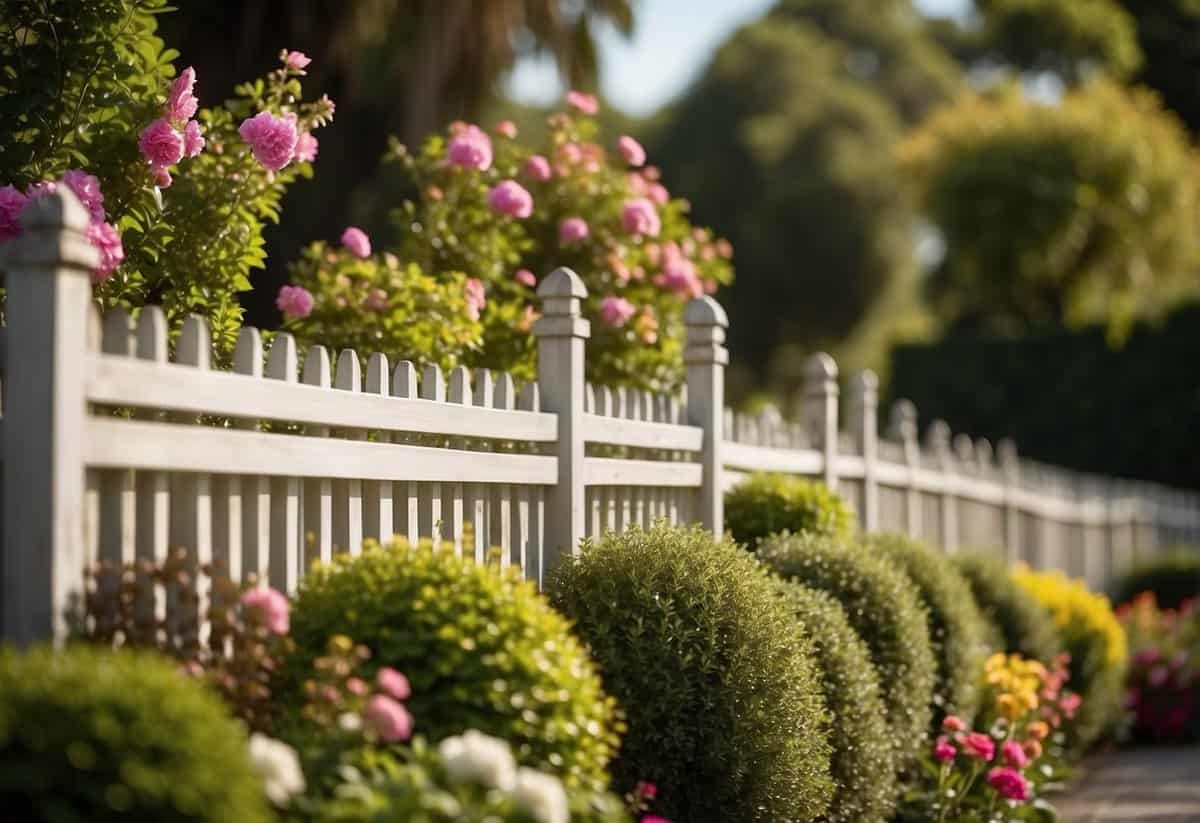Do You Have a Right to Privacy in Your Garden? Understanding Your Boundaries
Ever wondered if you have a right to privacy in your garden? You’re not alone. Many homeowners face this question, especially when they feel their space is being invaded. Yes, you do have a right to privacy in your garden, but it comes with a few legal intricacies. Depending on where you live, these rights can vary, and sometimes, you’ll need to consider local ordinances and planning permissions.

In your backyard, things can get quite complex. For instance, in the UK, installing a tall fence for privacy might require planning permission. Even if you’re setting up a security camera, it must not be aimed exclusively at your neighbors’ property to respect their privacy. Balancing your need for privacy without violating others’ rights is crucial.
Your front yard, on the other hand, typically offers less privacy. Local laws often restrict the height of hedges or fences, and neighbors or passersby can usually see into your space. Despite these hurdles, there are many creative ways to enhance your garden privacy beautifully and legally. Keep reading to explore more tips and ideas to enjoy your garden without compromising your or your neighbors’ rights.
Understanding Your Right to Privacy

When considering your right to privacy in your garden, it’s essential to recognize the elements that contribute to your protections, like legal frameworks and neighbor relations. Here are key factors to consider for a better understanding of your situation.
Legal Framework and Planning Permission
Laws about privacy differ by location, but most places have rules to protect your space. In the U.S., the right to privacy is derived from the Constitution and court decisions. Specific laws about garden privacy might involve local ordinances.
Planning permission is often needed if you want to build structures like fences or hedges that ensure privacy. These structures might need to follow height and location restrictions set by your city or town.
Privacy rules can also dictate the use of cameras or other surveillance devices in your yard. Some regions might require you to respect the privacy of neighbors, preventing intrusive setups that could cause conflicts.
Common Law and Neighbor Relations
Beyond formal laws, common law and good neighbor practices also play a role in garden privacy. If you respect your neighbor’s space, it helps in maintaining a peaceful environment. Issues like placing privacy fences or bushes are often resolved through friendly discussion.
Common law principles may grant you certain rights to use your garden without disturbance. This can help protect you from actions that violate your space, such as unreasonable noise or obtrusive views from neighboring properties.
Maintaining open communication with your neighbors can prevent disputes. Sometimes, simply explaining your needs and finding mutual solutions can build a strong sense of respect and cooperation.
Understanding both legal aspects and neighborly conduct will help you create a pleasant and private garden.
Garden Design for Privacy

Creating a private retreat in your garden involves thoughtful design elements. You can use trees, shrubs, screens, and structures to transform your garden into a cozy hideaway.
Strategic Planting with Trees and Shrubs
Using trees and shrubs is an effective way to create natural barriers in your garden. Tall trees like arborvitae provide thick, year-round coverage. Shrubs such as boxwood or holly work well for lower, dense borders.
You can plant a mix of evergreens and deciduous trees to maintain privacy through all seasons. Hedges make excellent green walls that block sightlines and reduce noise. Perennials can also add layers to your garden, enhancing both appearance and seclusion.
Planting in clusters adds a layered look and boosts privacy. Work with a landscape architect to plan placements that maximize coverage while ensuring healthy growth.
Incorporating Structures Like Pergolas and Arbors
Pergolas and arbors are not just decorative; they also enhance privacy. You can place a pergola over a seating area to create an intimate space. Add climbing plants like wisteria to the pergola for natural overhead coverage.
Arbors at garden entrances provide a welcoming feel while marking boundary lines. Use them with landscape architects to design pathways that lead to more private sections of your garden.
Both structures can be combined with tall plants or privacy panels for extra seclusion. This blend of natural and built elements creates various levels of privacy, making your garden more inviting and protected.
Utilizing Privacy Screens and Fences
Privacy screens and fences are quick solutions for immediate seclusion. Wooden or metal privacy fences can be customized to fit any style. They offer solid barriers that block views and dampen noises.
Decorative screens made of bamboo or lattice provide a softer, more flexible option. These can be positioned temporarily or permanently based on your needs.
You can also use retractable screens that adapt to your privacy needs. Combining these screens with plants or garden structures helps to blend the man-made elements into the natural landscape, giving a harmonious look to your garden.
Selecting Plants and Materials

Creating privacy in your garden involves selecting the right plants and materials. You’ll want to choose ones that not only provide the privacy you need but also complement your garden’s look.
Evergreen Varieties for Year-Round Coverage
Evergreen plants are great for privacy because they keep their foliage all year. Popular choices include privet, holly, and boxwood. These plants create thick hedges that block views throughout the seasons.
Bamboo is another option. Though it can be invasive, careful planting and maintaining can keep it in check. Phyllostachys aureosulcata, for example, is ideal for smaller, urban yards and containers, growing 15-25 feet tall with an 8-15 foot spread.
Using evergreens ensures you won’t have gaps in coverage, providing consistent privacy.
Choosing Ornamental Grasses and Climbing Plants
Ornamental grasses and climbing plants can add texture and height to your garden privacy screen. Ornamental grasses like Miscanthus and Pampas Grass can reach heights of several feet, creating a natural barrier.
Climbing plants such as ivy, wisteria, and honeysuckle can grow on trellises or walls. These climbers not only add vertical interest but also cover structures effectively. Using these plants can give your garden a softer, more natural feel.
Mixing these elements can help you create a visually appealing and effective privacy screen.
Functional and Aesthetic Material Considerations
When it comes to building privacy screens, materials matter as much as plants. Materials like stone walls and lattice structures offer strong and durable options. Stone walls provide a permanent barrier, while lattice can support climbing plants.
Consider using wood for a natural look, or bamboo panels for an exotic touch. These materials can blend well with your garden plants, creating a cohesive design.
Make sure the materials you choose match your garden style. This way, your privacy screens will enhance the overall look and feel of your space while effectively providing the privacy you need.
Enhancing Privacy in Small Spaces

You can create more privacy in your small garden or patio with the right setup and design. Simple changes like adding privacy screens or using container gardens can transform your space.
Creative Ideas for Compact Gardens and Patios
For small areas, consider installing privacy screens. They are great for blocking views and come in materials like wood or metal. These can be decorated with climbing plants. Fountains can also add privacy by creating white noise, which blocks out sound from neighbors.
If you like a natural barrier, try tall plants or shrubs. Bamboo, for instance, grows quickly and provides excellent coverage. You can also use trellises with vines like ivy or clematis to add greenery and privacy.
Outdoor curtains are another option. They are easy to install and can open and close as needed. For patios, using a cantilever umbrella or canopy can create a secluded feeling without permanent structures.
Container Gardening and Raised Beds
Container gardens are perfect for small spaces. Using pots of different sizes and heights can create a dense and layered look. This method also allows you to move plants as needed to adjust your privacy setup.
Raised beds are another great idea. They elevate your plants, making it harder for others to see into your garden. Raised beds also improve drainage and soil quality, which helps plants grow better.
Mixing container gardens and raised beds can maximize your space’s privacy and usability. Choose plants of varying heights and foliage density to create an effective, natural screen. Adding elements like small trees or tall grasses in containers can further enhance privacy in a compact area.
Maintaining Privacy and Aesthetics

Balancing privacy and beauty in your garden involves regular maintenance of plant-based screens and periodic updates to structural elements, like fences and walls.
Regular Maintenance for Plant-Based Privacy
Hedges and Trees: Hedges like arborvitae and trees such as Leyland cypress offer excellent backyard privacy. Trim these regularly to maintain their shape and height. Pruning not only keeps them looking good but also ensures healthy growth.
Ground Cover: Use low-maintenance ground cover plants to fill gaps and maintain curb appeal. Plants like clover or pachysandra need minimal care but provide dense coverage.
Watering and Fertilizing: Keep your screens lush and green by watering them adequately, especially during dry spells. Fertilizing once or twice a year can boost their growth and health.
Pest Control: Check for pests and signs of disease. Use natural or chemical treatments as needed to protect your green privacy screens from damage.
Periodic Updating of Structural Elements
Fences: Timber or vinyl fences offer immediate privacy. Inspect them annually for wear and tear. Replace broken or damaged sections to maintain their strength and appearance.
Garden Walls: Garden walls add a stylish touch while screening off areas. Ensure that the materials used, like brick or stone, are in good condition. Conduct repairs every few years to prevent crumbling and maintain aesthetics.
Screens and Trellises: These can be temporary or permanent. They provide instant privacy and help plants like ivy or jasmine to grow upwards, adding green beauty to your garden. Replace these structures if they become unstable or worn out.
Painting and Staining: Walls and fences can fade or peel over time. Fresh paint or stain can revive their look. Choose colors that complement your garden’s theme to enhance curb appeal.







